Israel’s Independence Day
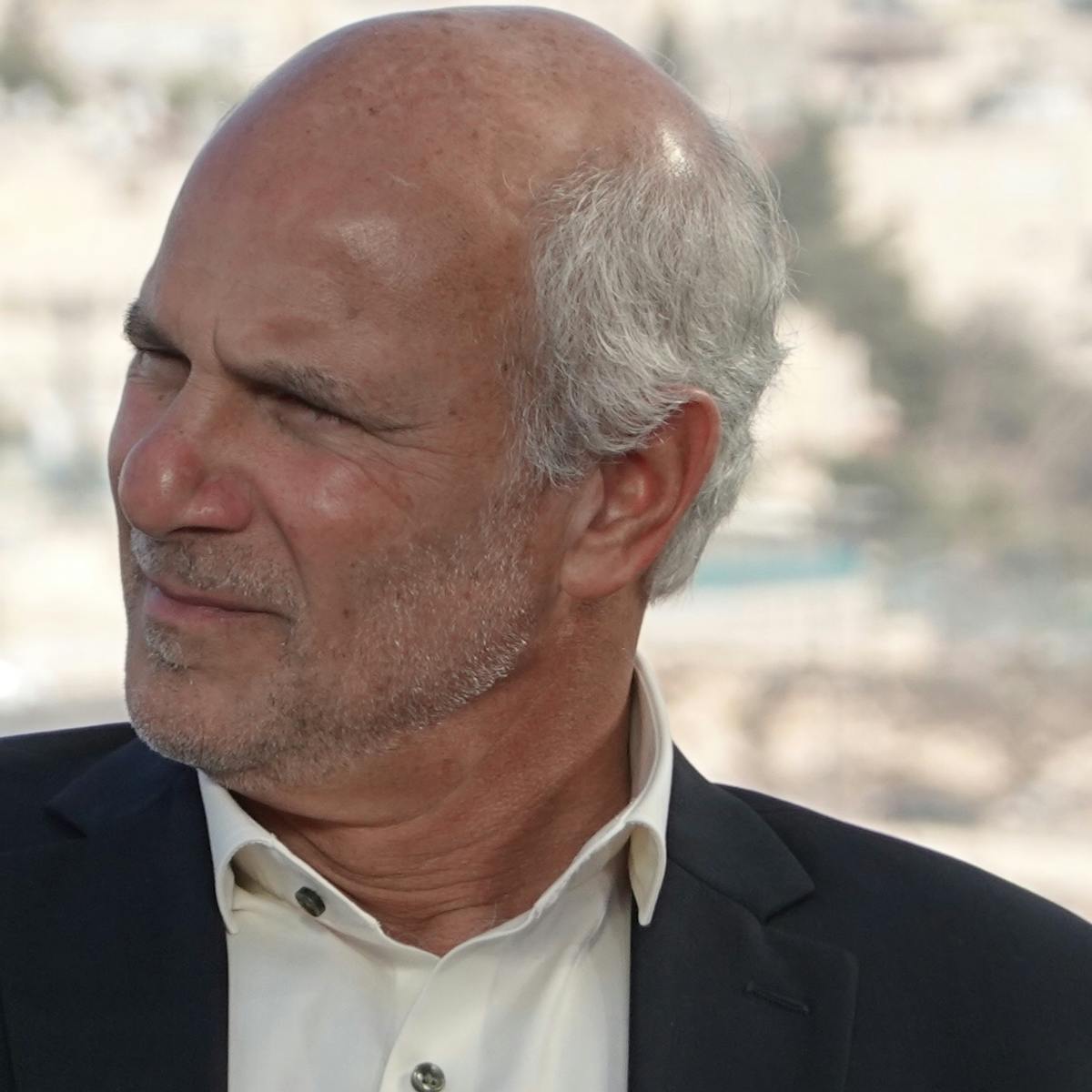
“Hear the word of the LORD, O nations, and declare it in the isles afar off, and say, ‘He who scattered Israel will gather him, and keep him as a shepherd does his flock.” (Jeremiah 31:10)
Independence day is upon us again here in Israel, and each year, as we arrive at this special season, our fast-paced and dynamic nation slows down and pauses to contemplate, remember and relive the momentous events that brought us here.
We remember that we are here because God called us to be His special people; that He fashioned us to be His representatives on earth and to bring forth the Savior of the world that was to be born from the lines of the Davidic Kings and lay down His perfect life as the Passover Sacrifice Lamb.
We contemplate the highs and the lows of this great calling; the many times when we, as a people, failed; and the many times God rescued us from ourselves and from our enemies in order to uphold His covenant promises.
We relive the heroic moments of our rich history as well as the tragic and painful seasons that mark our national saga ever since God called Father Abraham in Genesis chapter 12, all the way to the momentous events and unprecedented blessings we are experiencing today in the reborn State of Israel.
No one could have imagined that God’s promises will stretch across so many centuries and continents; or that His covenant will endure so many battles and outlive so many trials. Yet here we are, celebrating again the miracle of the re-birth of the State of Israel against all odds, and rejoicing that we can be part of the generation that witnessed the fulfillment of God’s promise, saying,
“... He who scattered Israel will gather him, and keep him as a shepherd does his flock. For the LORD has redeemed Jacob, and ransomed him from the hand of one stronger than he. Therefore they shall come and sing in the height of Zion, streaming to the goodness of the LORD, for wheat and new wine and oil, for the young of the flock and the herd; Their souls shall be like a well-watered garden, and they shall sorrow no more at all.” (Jeremiah 31:10-12).
Emerging from the horrors of the Nazi Holocaust that engolfed Europe in the darkness of the shadow of death and snuffing out the lights of 1/3 of the global Jewish population, on the 29th of November 1947, the United Nations voted on the historic “Partition Plan” of Palestine which granted the creation of a Jewish State in the ancient homeland.
With the British Mandate coming to its end and with ethnic tensions rising throughout the territory, the U.N. affirmed Israel’s right to come back to life as a sovereign nation in its own ancestral Promised Land in what was termed the original “Two State Solution.”
The Jewish national leadership accepted the international proposal (though its land allotment was but a tiny fraction of the size of the biblical Promised Land); while the Arab world vehemently rejected the U.N. resolution and threatened to go to war.
Six months following this historic 1947 U.N. resolution 181 which conferred upon the Jewish people “the authority” to organize themselves as a sovereign nation in their own homeland, our National Committee, Israel’s provisional government, took action.
Under the leadership of our first Prime Minister David Ben Gurion, on May 14, 1948, they publicly declared the birth of Israel as an independent sovereign state upon the termination of the British Mandate at midnight that same day.
They did so, knowing full well that Israel’s Arab neighbors will respond with an all out war to annihilate the newborn nation, yet they took faith and acted in accordance with the biblical vision of the dry bones coming back to life as described in Ezekiel chapter 37.
This Declaration of Independence was broadcasted while facing the threat of imminent war as Middle Eastern Arab interests were actively resisting the implementation of U.N. resolution 181 and encouraging Arab attacks on Jewish settlements and towns in what was effectively becoming a civil war.
Jerusalem, being more isolated from the bulk of the Jewish population, was held under siege with no access to food, water, or protection. As the conflicts intensified following the 1947 U.N. resolution, the siege was temporarily broken and Jerusalem was resupplied after fierce fighting.
It was this success of the Jewish Militia operations during that period that convinced the Western powers that the Jewish community of Palestine could indeed defend itself, which led them to support Israel's Declaration of Independence the following May.
The day following the broadcasting of the Declaration of Independence which was made in Tel Aviv on May 14, 1948, the ethnic hostilities transformed into an all out open war between the one-day-old State of Israel and her Arab Neighboring countries.
Egypt, Transjordan, Syria, and expeditionary forces from Iraq invaded the territory, took control of the Arab areas, and launched immediate attacks on Israeli communities in the Jewish areas. What is known as the War of Independence lasted nearly a year of intense fighting as the young IDF (which was formed in haste bringing together the different factions of the Jewish militias) repelled the invading armies with great sacrifice and secured the land.
One percent of Israel’s entire population of 600,000 were killed during that war, paying the price for freedom and rebirth after 2,000 long and painful years of exile and shame.
When the war ended in March 1949, the State of Israel controlled both the territories proposed by the U.N. resolution for the Jewish state and additional areas that had been allocated for an Arab state.
This expansion occurred after the Arabs rejected the proposal and chose to go to war instead. Israel was now in control of West Jerusalem, while Transjordan assumed control of East Jerusalem and Judea and Samaria (West Bank), with Egypt controlling the Gaza Strip.
This war which was initiated by the invading Arab armies, triggered significant demographic changes throughout the Middle East as nearly 700,000 Palestinian Arabs fled areas of conflict and became refugees, while nearly 700,000 Jews who were persecuted and expelled from Arab countries emigrated to Israel.
Sadly, the Arab refugees remained displaced and often neglected in their host Arab countries, while the Jewish refugees who emigrated to Israel were welcomed and absorbed in the newborn State with full rights and opportunities to grow and prosper with their young nation.
The Six Day War of 1967 again changed the regional borders and balance of powers as Israel gained control over all of Jerusalem, Judea and Samaria, the Sinai, and the Golan Heights.
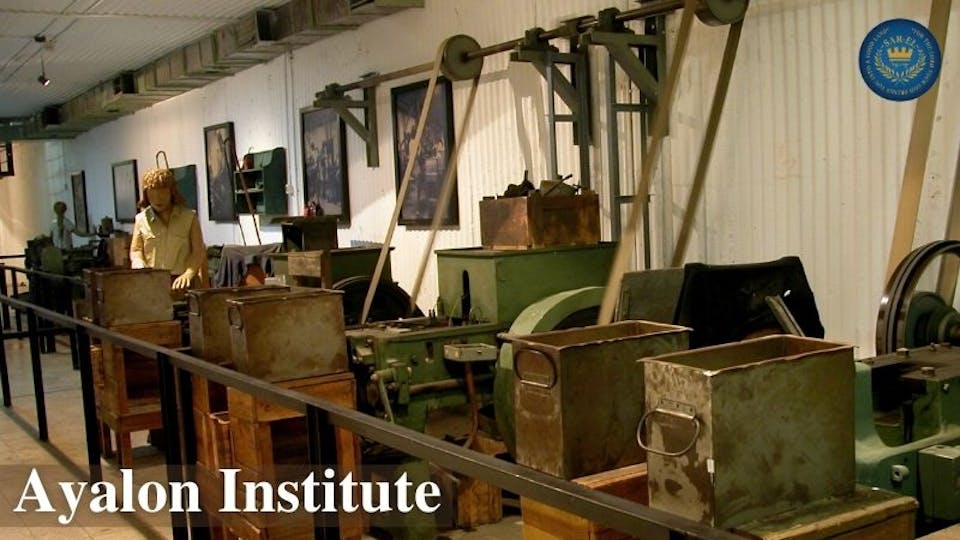
Let us review the story of Israel’s Independence as we travel up the road from the coastal plains to Jerusalem:
Ayalon Institute
One of the most interesting sites commemorating the struggle to defend the Jewish population in Israel during the hostile British Mandate of the 1930’s is the Ayalon Institute, located just a short distance south of Tel Aviv.
Needing urgently to produce their own weapons and ammunition in order to defend the Jewish communities from constant Arab assaults, clandestine factories were developed. The defenders were especially short on 9mm cartridges, and production (punching, drilling, cutting) machines were successfully purchased in Poland in 1938 and smuggled into Israel through Beirut.
The site for the future secret plant was selected to be at a training facility where Jewish pioneers were trained for Kibbutz life before being assigned to various cooperatives around the country. The location was already an established Kibbutz on top of a hill and featured a nearby train station which was necessary for the operation.
A group of 45 teenagers and young adults was selected to operate the facility under strict secrecy, facing death sentences by the British government if caught. In a short and intense three week period the entire hill was dug up and a spacious underground chamber the size of a tennis court was built with thick concrete walls and ceiling.
Above ground, one could find normal structures that are common in an ordinary Kibbutz such as a dining hall, nursery, laundromat and a bakery. With the kibbutz buildings on top of the underground ammunition factory, many kibbutz members were not even aware that a clandestine weapons plant was operating under their feet.
This factory operated between 1945 and 1948, producing an average of 40,000 bullets each day. It played a crucial role in the efforts to prepare for the challenges ahead. With independence secured, the hidden factory was moved above ground, and the original pioneer group of 45 youngsters decided to stay together and establish a new Kibbutz up north.
Only in 1973 was the secret operation disclosed to the Israeli public, and today, the Ayalon Institute serves as a museum that tells the story of this hidden ammunition factory where forty five women and men labored secretly and sacrificially for three years.
With occasional poor gunpowder quality, the production crews had to be sure the ammunition was safe and effective through random sampled bullets which were shot in order to check for accuracy and precision.
The shooting was timed precisely to the moment when the train passed by, masking the noise from British ears in the nearby camp. These, and many other amazing stories are on display at the Ayalon Museum.
Mizpe Harel & The Burma Road
Hidden in the Jerusalem mountains, the Burma Road tells the story of the 1948-1949 battle over Jerusalem as few sites do. This road is a testimony to the young Palmach fighters who, against overwhelming odds, delivered supplies to the besieged City of Jerusalem during the darkest moments of the War of Independence.
With the main road from the coast to Jerusalem blocked and controlled by Arab military units and the Jordanian Legion, it was critical to create an alternative route. A small Palmach force from the Harel Brigade navigated at night, bypassing hostile Arab villages and military posts, and created the Latrun bypass where food, fuel, and medical supplies could reach Jerusalem starting in June of 1948.
The name "Burma Road" came from an actual road located in East Asia where the US and British forces also bypassed areas controlled by the Japanese military during WW2 in order to deliver supplies to the Chinese army.
The road today serves as a spectacular nature reserve in the Judean Mountains, featuring monuments, observation points, picnic areas, archeological sites, and ancient agricultural landscaping. Mitzpe Harel observation point marks the beginning of the historic Burma Road.
From here, travelers can explore sections of the road where supplies were once transported using Jeeps, beasts of burden, and even human porters. These supplies were carried until they could finally be loaded onto trucks heading to Jerusalem.
Watchtowers and observation points along the road offer spectacular views of the region, and travelers are advised to drive 4x4 vehicles.
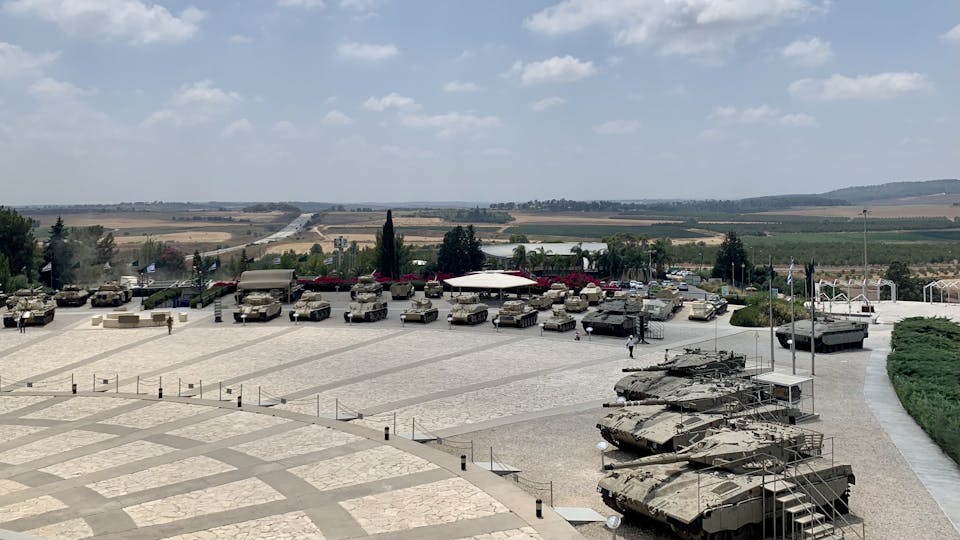
Latrun
A fortress located on a strategic hilltop above the Ayalon Valley, Latrun overlooks the road between Tel Aviv and Jerusalem, and as such it became the site of fierce fighting during the 1948-1949 War of Independence. The site was controlled by the Jordanian Legion until 1967 when Israel liberated the entire region including Judea and Samaria.
Today, the area includes the historic Latrun Abbey, Mini Israel visitors’ center, the International Center for the Study of Bird Migration and a military Memorial and Museum for the 7th Armored Brigade. With the road from the coastal plain to Jerusalem blocked after the British withdrawal from the site, Jordanian Legionnaires used the fort to shell Israeli vehicles traveling on the road below, imposing a siege on Jerusalem.
On the 24th of May, 1948, Israel's newly created 7th Armored Brigade, together with a battalion of the Alexandroni Brigade, attacked Latrun. Codenamed Operation Ben Nun Alef, the assault was unsuccessful, and on the 31st of May a second attack was launched which also failed to meet its objective.
With the strategic fortress remaining in Jordanian hands, an alternative road had to be opened through the seemingly impassable Judean mountains, a road which was named “the Burma Road'' that effectively put an end to the Arab blockade of Jerusalem.
After the 1949 Armistice Agreements, the fortress remained in Jordanian hands and was surrounded by a perimeter of no-man's land, yet sniper fire still harassed Israeli convoys to Jerusalem.Latrun was captured by Israeli forces during the Six-Day War of 1967, allowing the reopening of the main highway to Jerusalem.
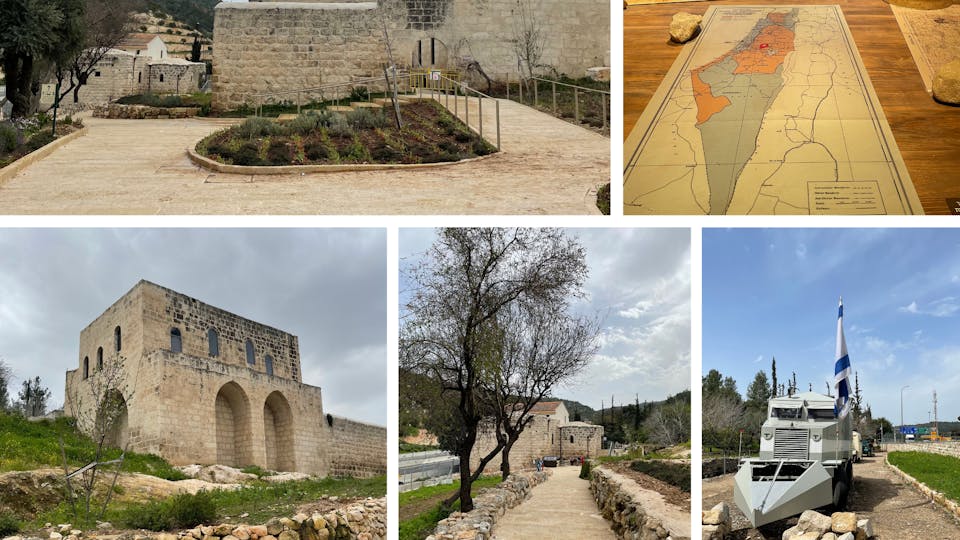
Chan Sha’ar Hagai
Sha’ar HaGai, also known as “Bab El-Wad” in the Arabic language which means “The Gate of the Valley,” is located right off Highway 1 (the first highway in Israel) as it ascends from the coastal lowlands up toward Jerusalem. Right at this spot stands an ancient Turkish Khan (wayside inn) from the Ottoman Period which has recently been renovated and turned into a national memorial and an interactive museum.
This site reenacts and commemorates the story of courage amid the fears and great perils of Israel’s war of independence of 1948-1949. At that time, Jerusalem was cut off from the rest of the country, isolated and besieged by enemy forces, and this particular road provided the only access to bringing needed supplies to Jerusalem.
The Jewish convoys that kept trying to break through the siege came under intense assaults and suffered many casualties during the fierce battles. Khan Sha’ar HaGai commemorates this important landmark in Israel’s struggle for Independence as it celebrates the miracle of the establishment of the State of Israel in our time, and the price it exacted from the young nation.
While visiting this heritage center, you will hear first hand testimonies of the fighters who broke through the siege; take part in the battle strategies at the interactive stations; and learn about the hard decisions the fighters were faced with as they battled to rescue Jerusalem.
Visiting this amazing commemorative museum, you will feel as if you are traveling in an armored vehicle, often under enemy fire, while personally witnessing the valor of these young warriors and the price that was paid to keep the lifeline to Jerusalem open.

Har-Adar Monument
Har Adar is a beautiful Israeli community located on the Green Line approximately 15 kilometers west of Jerusalem. Its name is derived from the term “Radar Mountain” in memory of what was thought to be a British Radar station that was placed on that mountain top during WW2, but which was actually a radio relay station.
The British military handed that station over to the Jordanian Legion in May of 1948 just before they left the land and the War of Independence erupted. A monument erected on the top of the mountain commemorates the valiant attempts by Israel’s Harel Brigade to capture the strategic site.
Israeli forces held this important position for a short time, but it fell back into Jordanian hands and was annexed by Jordan in 1950 until it was re-captured and liberated during the Six-Day War by the same Israeli Harel Brigade.
The tall monument on the mountain top commemorates the soldiers who fell during those fierce battles, displaying the scripture from 2 Samuel 1:19 saying, “The beauty of Israel is slain on your high places - How the mighty have fallen!”
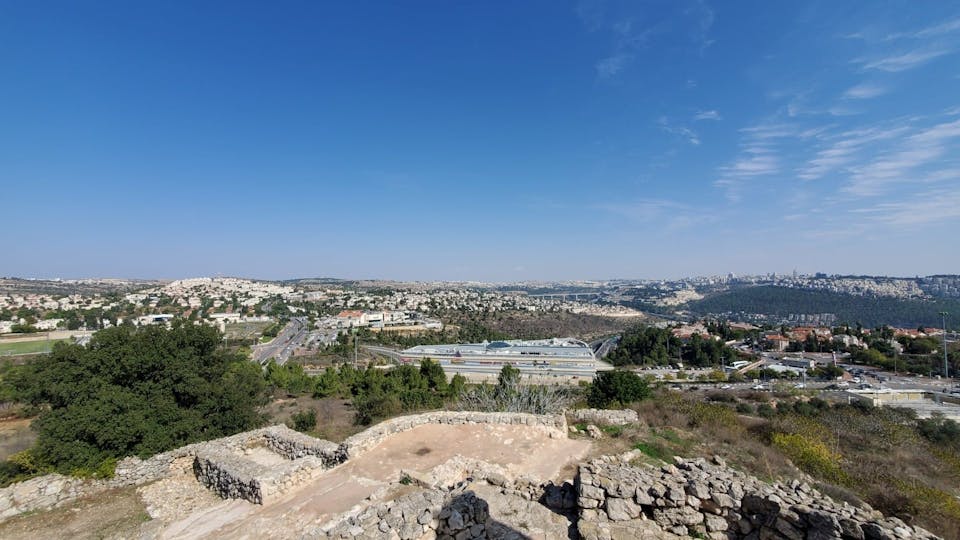
Castel National Park
Rising over Highway # 1 on the way to Jerusalem, the site of the ancient Castel fortress has become a symbol of the fierce battles of the 1948-1949 War of Independence to break through to Jerusalem. Featuring trenches and bunkers that still echo the distant sounds of battle, the Castel National Park is a must visit memorial for any student of history.
Consisting of a fortified summit which housed the former Palestinian village of Al-Qastal, or HaCástel in Hebrew, the Park is located 8 km west of Jerusalem and is known for the key battles that took place in the region during Operation Nachshon which was fought in April of 1948.
Fierce battles raging across those strategic summits claimed many lives, and the Castel exchanged hands several times during the course of the fighting. The tide turned when the famous Arab commander, Abd al-Qadir al-Husayni, died in battle.
As many of the Arab fighters left their positions in order to attend his funeral on April 9, the Castel fortified bunkers fell into Israeli hands. Today, the site features a memorial for the fallen andl to the courageous convoys that tried to break through the blockade and reach Jerusalem.
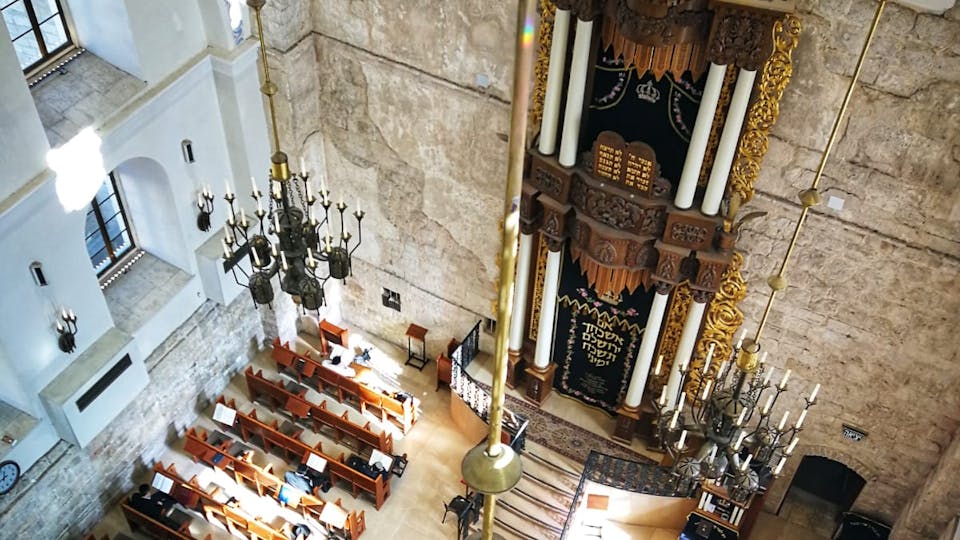
Hurva Synagogue
The Hurva Synagogue which is located in the Jewish quarter of Jerusalem is one of the most moving sites in the Old City testifying of Jewish history in the City and its resurgence after centuries of neglect and ruin.
Known as the " Ruined Synagogue," and also as “Hurvat Rabbi Yehudah Ha-Hasid” (The ruin of Rabbi Judah the Pious), it was originally constructed in the early 18th century by followers of Rabbi Judah Ha-Hasid on the ruins of a 15th century older synagogue that was destroyed in 1721 by the Ottoman authorities for failure to pay a debt.
The building remained desolate for 116 years until it was resettled in 1837 by members of a Jewish community who rebuilt the synagogue in 1864, turning it into Jerusalem's main Ashkenazi synagogue at that time. However, this synagogue was also destroyed by the Jordanian Legion during the fighting of the 1948-1949 War of Independence.
With such a stormy and profound history, the site was marked for reconstruction after the Israeli victory of the 1967 Six Day War, and following years of deliberation the synagogue was rebuilt in 1977 to become a prominent landmark of the Jewish Quarter.
The newly rebuilt synagogue was dedicated on March 15, 2010. As a historically valuable and rare symbol of Jerusalem and its Jewish heritage, the synagogue has been portrayed over the years in numerous paintings, literature and cultural events.
The Gal-Ed at the Jewish Quarter
During the 1948-1949 War of Independence, the Old City of Jerusalem was under siege by the Jordanian Legion for nearly a year and a half, preventing the supply of food, medicine, ammunition, and sometimes even water.
At the time, the Jewish Quarter of Jerusalem was attacked by Jordanian military units and Arab gangs emerging from the Muslim Quarter. The Jordanians shelled the Jewish neighborhood mercilessly to the point that it became, according to the Jordanian commander’s own report, “... their graveyard… with death and destruction reigning over it.”
As the death toll rose and the bodies piled up, another problem came up since, according to Jewish Law, the dead cannot be buried within the city limits. And since the Jordanians refused to allow transfer of the bodies to cemeteries outside the city, special permission was granted by the Head Rabbi to allow temporary burial within the Jewish Quarter.
A small courtyard was selected for that purpose, yet the burial was hasty due to enemy fire. Only after Jerusalem was liberated during the Six Day War of 1967 were the 48 fallen brought to proper rest, and today the Gal-Ed Memorial serves as a reminder of these momentous events and those who laid down their lives there.
Next to the monument is the Jewish Quarter Defender’s Memorial which pays respect to all 69 Jews who lost their lives during those battles, half of them civilians.
The Monument for the Har-El Troops at Gan Sacker
The Sacher Park is the largest stretch of green grass, playgrounds, and picnic facilities in the City of Jerusalem. The Park contains a number of memorials, including one for the fallen fighters of the famous Harel Brigade that fought all around the Jerusalem region during the 1948-1949 War of Independence.
The monument stands on the slope leading up to Israel’s Supreme Court Building near the historical Rehavia neighborhood and the Israeli Parliament, the Knesset.
With sprawling green spaces, trees, and private corners, the Park is a popular spot for public events, races, games, and family picnics, with a charming bird observatory overlooking the grounds. When in Jerusalem, this is a place you do not want to miss.
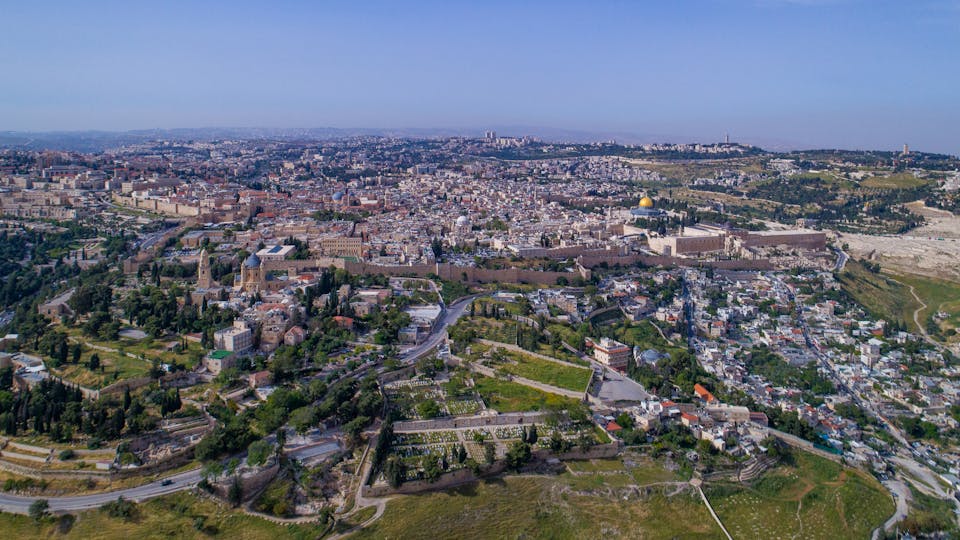
A Prayer of Thanksgiving:
As the nation of Israel is gearing up for Memorial Day ceremonies and Independence Day celebrations, we are reminded that we already know the end of the story! Though the road has been long and often challenging, the people of Israel never lost hope. They kept their eyes on the God of their Fathers, anticipating the fulfillment of all His great and precious promises.
Their hope extends to His people across the world. “For the vision is yet for an appointed time; but at the end it will speak, and it will not lie. Though it tarries, wait for it; because it will surely come, It will not tarry.” (Habakkuk 2:3).
From Israel, on this Independence Day, we send a blessing of peace and thanksgiving to you and to all our friends around the world. As KIng David worshiped God long ago, we voice our prayer today with him, saying,
“Let God arise, let His enemies be scattered; let those also who hate Him flee before Him. As smoke is driven away, so drive them away; as wax melts before the fire, so let the wicked perish at the presence of God. But let the righteous be glad; let them rejoice before God; yes, let them rejoice exceedingly. Sing to God, sing praises to His name; extol Him who rides on the clouds, by His name YAH, and rejoice before Him.” (Psalm 68:1-4). Amen.
Your Sar-El team